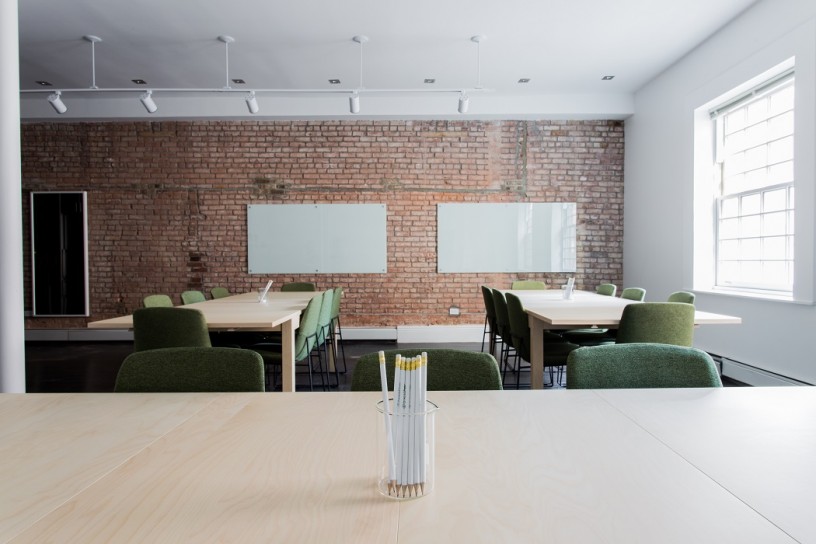Previously on the Crowdfund Campus blog we illustrated what the collaborative classroom is, and why it’s important.
Today, we aim to inspire you to introduce collaboration to your classroom by presenting six methods that will foster an active learning environment for all – because education does not begin and end with a textbook or test.
Primary Level
Fishbowl
This strategy lets students practice being both a speaker and listener during a discussion – an important skill to master and a way to ensure they learn that the collaborative classroom is about two-way conversation.
Arrange the pupils’ desks into two circles, one inside the other. Pose a question to the children in the inner circle, allowing them to ask questions, express opinions, and share information. Ask the children in the outer circle to actively listen to the conversation and reflect on the ideas being presented, but do not invite them to join in: they must understand that their preliminary position is to observe. After a set time (or after the conversation comes to a natural conclusion), reverse the roles.
Physically moving the classroom around like this stimulates the children’s senses and provides structure for the session, whilst the defined ‘speaker’ and ‘listener’ positions help the pupils reflect on what a ‘good discussion’ looks like and ensures no-one feels left out.
Save the Last Word
This fun, visual ‘game’ compels all the class to participate – a great way to support shy students to share their ideas, and a means of encouraging the louder pupils to practice being quiet and contemplative.
Prepare a collection of posters, paintings and photographs that reflect the subject you are studying. Ask each pupil to select an image that stands out to them. On the back, get each child to write out why they selected this image, what they think it represents, and why they think it is important. Then divide the class into groups of three, labelling each pupil ‘1’, ‘2’ and ‘3’. Invite the number 1s to show their chosen image to their group, and then ask numbers 2 and 3 to discuss this for a short period of time (with the number 1s listening but not participating). After several minutes, ask the number 1s to read out what they’ve written on the back of the image, thus giving them ‘the last word’. Repeat the process with pupils 2 and 3 as presenters.
Secondary Level
Sentence Stems
Collaboration doesn’t come easily to all students, and the job of the teacher, therefore, is to facilitate conversation amongst the whole class, helping all involved learn how to express themselves confidently. At secondary level, meaningful conversations can make learning more immediate, personal and emotive – but, very often, group activities are dominated by the strongest speakers or personalities. The use of sentence stems thus provides a structure for discussion and a specific language for all to share in. The result is that the entire class is engaged, with all students learning to analyse opposing perspectives, be accountable for their own positions, and adapt their thinking on the fly.
Example sentence stems – which the teacher might write on index cards for pupils to pick from randomly – include:
“Is it your position that…”
“I’m confused when you say x. Can you elaborate?”
“Is it fair to say you believe…”
“I see it differently because…”
“I agree with Y, but we also have to consider…”
Brainwriting
Brainstorming has long been considered the collaborative learning method of choice. However, brainstorming sessions often result in the most obvious ideas being discussed – and only by those who speak the loudest. Brainwriting, by contrast, separates the ideas-generation stage from the group discussion, encouraging the entire class to present their points of view and resulting in original, higher-level solutions.
Pose a question to your classroom and ask each student to consider it independently. Get them to write down their ideas on a sticky note and attach it to a wall. Do not include names or any identifying information; all the posts should be anonymous. Invite the class up to the wall and ask them to read and think silently about all the ideas generated. You can then facilitate the group discussion from a more level, and considered, playing field.
Higher Level
Live Collaboration
Students today rarely come to class with only a pen and paper. In their bags they are likely to have a smartphone, tablet, and/or laptop – and it’s up to educators to ensure these are used, not abused! By streamlining devices and systems to create an engaging and highly-customisable environment, students can take control of their education whilst also feeling like they’re working alongside others.
Two tools that we love at this level are Kramer and Kaltura. Kramer connects devices via one central control system, enabling classes to work together as a whole or be divided into groups. This live collaboration tool also allows files to be shared in real time, and turns any display into a whiteboard, as and when required – allowing for immediate engagement, reflection and discussion. Similarly, Kaltura creates a campus-wide management and delivery system that can store lectures, post assignments, and even prompt students to take tests. This allows the student to choose when and how they study, recognising that the lecture hall is not the holy grail for all.
Sandpit by Crowdfund Campus
Learners at this level don’t need such a clearly defined structure – what they require is stimulation. (Ever met a student who is wide awake at 9am? Thought not.) One of the best platforms for turning technology into a teaching mechanism is Sandpit: an online marketplace that allows students to engage with enterprise in a safe, simulated environment. By grouping students into teams, not only do they learn how to collaborate on – and share in – idea-development and problem-solving processes, but also they develop real-life leadership, management, and communication skills. This practical exercise can be mapped to the learning and assessment outcomes of your module, adding variety to theoretical teaching and assessment methods (and keeping students awake – at least until lunchtime!).
For tailored advice and assistance on implementing collaboration in your classroom, contact the Crowdfund Campus team today on +44 (0)7545 898120 or hello@crowdfundcampus.com. We would love to show you around the Sandpit and demonstrate why active learning is the greatest arsenal for today’s teachers.





Leave a Reply